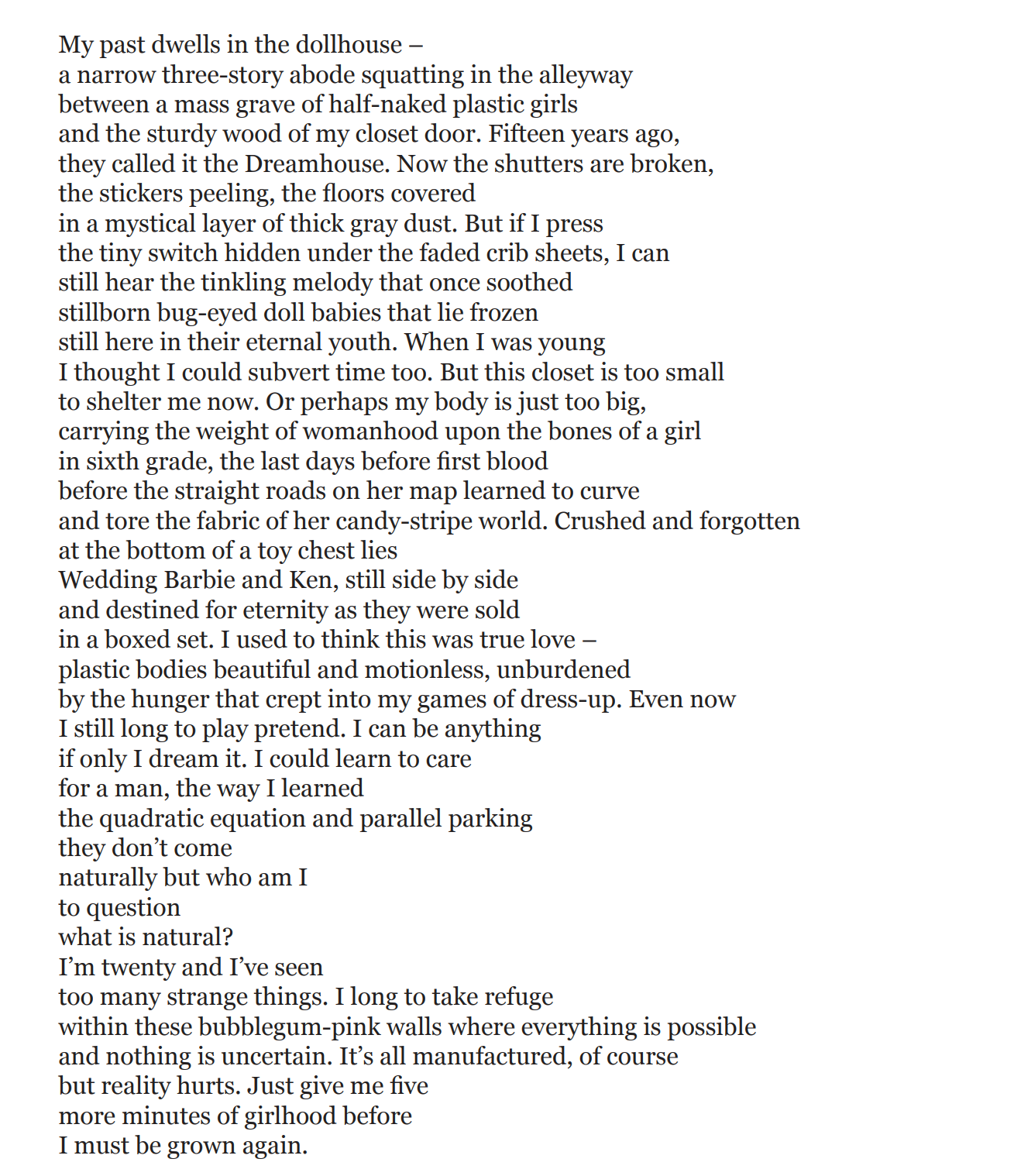Dollhouse
by Isabel Dorn

Isabel Dorn (she/her) is a junior at Lawrence University studying Creative Writing, Government, and Russian. She is a frequent contributor to her university’s weekly student-run newspaper The Lawrentian, where she shares pieces ranging from op-eds about intersectional activism to poetry that explores the complexities of coming of age in the 21st century. As a Vietnamese American woman, she sees writing as a powerful tool for social justice and strives to create more visibility for underrepresented groups with her work. When she’s not writing, you can usually find her participating in student government, creating niche Spotify playlists, or enjoying a good boba.




